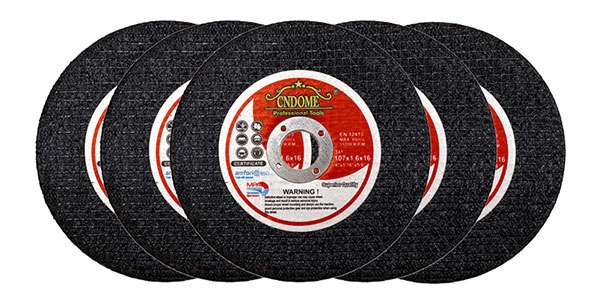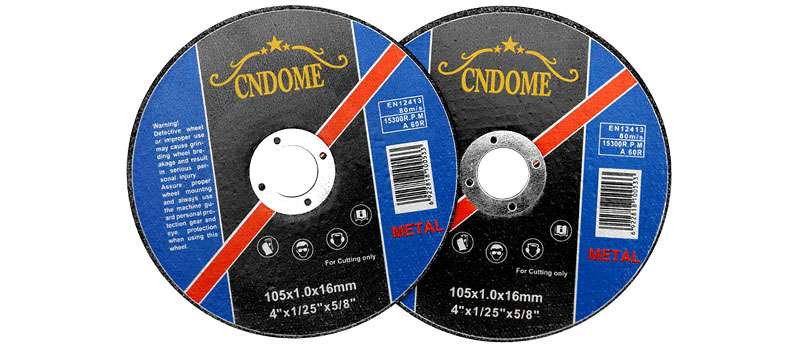Cutting discs are essential tools in metalworking, construction, and various industrial applications. However, their performance is not indefinite, and understanding the factors that influence the service life of cutting discs can help you get the most out of your tools while ensuring safety and efficiency. In this blog, we’ll explore the key factors that impact the service life of cutting discs and offer tips for maximizing their longevity.
1. Material of the Cutting Disc
- Abrasive Composition: The material used in the abrasive layer significantly impacts the disc’s durability. Discs made from high-quality materials like zirconia or ceramic tend to last longer compared to those made from aluminum oxide.
- Bonding Agent: The strength and type of the bonding agent that holds the abrasive grains together play a crucial role. Resin-bonded discs are common, but the quality of the resin affects how long the disc can withstand the stresses of cutting.
2. Type of Material Being Cut
- Hardness: Cutting through harder materials like stainless steel or cast iron will naturally wear down the disc faster than softer materials like aluminum.
- Thickness: Thicker materials require more effort to cut through, leading to faster disc wear.
3. Speed and Pressure During Use
- Rotational Speed: Operating the cutting disc at the recommended speed ensures optimal performance. Running the disc too fast can cause excessive wear, while running it too slow can reduce cutting efficiency.
- Applied Pressure: Excessive pressure can cause the disc to overheat and degrade quickly. It’s important to apply consistent, moderate pressure during cutting to extend the disc’s service life.
4. Cutting Technique
- Angle of Attack: The angle at which the disc is applied to the material can affect its wear. A perpendicular angle typically ensures even wear, while an angle that’s too steep can cause one side of the disc to wear out faster.
- Steady Movement: Maintaining a steady hand and avoiding jerky movements helps in preventing uneven wear on the disc.
5. Environmental Factors
- Temperature: High temperatures can lead to thermal damage, causing the disc to crack or wear out prematurely. Ensuring proper cooling or working in a controlled environment can help.
- Moisture and Corrosion: Exposure to moisture or corrosive environments can degrade the disc, especially if it’s stored improperly.
6. Maintenance and Storage
- Proper Storage: Storing cutting discs in a dry, cool place helps prevent moisture absorption and maintains their integrity.
- Regular Inspection: Before use, always inspect the disc for any signs of wear, cracks, or damage. Using a compromised disc can not only reduce its lifespan but also pose safety risks.
Tips for Maximizing Service Life of Cutting Discs
- Select the Right Disc: Match the disc to the material being cut and the specific requirements of your project.
- Follow Manufacturer’s Guidelines: Always adhere to the recommended speed, pressure, and usage instructions provided by the manufacturer.
- Use Appropriate Tools: Ensure that the cutting tool is compatible with the disc and is in good working condition.
- Avoid Overloading: Don’t push the disc beyond its limits—overloading can lead to premature wear or failure.
Conclusion
The service life of a cutting disc is influenced by several factors, including the material of the disc, the type of material being cut, and the conditions under which the disc is used. By understanding these factors and following best practices, you can maximize the lifespan of your cutting discs, ensuring efficient and cost-effective operation.
This guide should help you make informed decisions and optimize the use of your cutting discs for longer service life.



